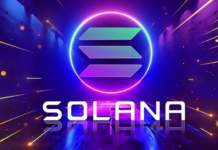
DeFi has been one of the hottest and fastest-growing sectors of the cryptocurrency industry in 2020. The term ‘DeFi‘ or decentralized finance, is a phrase that describes any financial services platform that is built using distributed ledger technology, usually blockchain.
While the sector has been steadily growing for several years, DeFi’s popularity really began to explode during the summer months of 2020, when the prices of a number of tokens belonging to DeFi platforms skyrocketed.
While most of these token prices have receded, the influx of capital into the DeFi ecosystem has brought an unprecedented amount of attention and new users to the DeFi space, particularly to the DeFi lending sector.
DeFi Lending Platforms: Here’s What You Need to Know
- Similar to traditional peer-to-peer lending platforms, DeFi lending platforms allow their users to lend their assets to others. In return, they receive interest payments. Because these platforms deal in cryptocurrency, the interest payments are almost always paid in crypto. Because these DeFi lending platforms are operated without a centralized “middle-man,” more of the platforms’ financial rewards are passed directly onto their users.
- Additionally, DeFi lending platforms make it possible for any individual to take out a loan without having to undergo KYC and AML checks, or disclose their identity to a third party at all. This makes financial services much more accessible to people who may not ordinarily be able to access financial services (i.e. individuals in rural areas of developing countries.)
- The use of blockchain in DeFi platforms arguably makes them more secure than centralized lending platforms, though there have been incidences of structural failure in the DeFi world.
- Because DeFi lending platforms are anonymous, they require lenders to provide collateral that’s worth more than the value of the loans themselves. For example, MakerDAO requires borrowers to collateralize each loan at a minimum of 150% of the value of the loan. This prevents bad actors from borrowing more than they can repay.
Which DeFi Lending Platform is Right for Me?
Whether you’re a borrower or a lender, choosing the right DeFi lending platform for you depends on a number of factors. These include the assets that you wish to borrow or lend, the interest rates you are after, and the level of safety and security you are comfortable with.
Therefore, it’s almost impossible to say which DeFi platform is the best and which is the worst. However, here are five of the most popular DeFi lending platforms in the industry.
1. CREAM Finance
History: Launched on the Ethereum blockchain in August of 2020, CREAM Finance is one of the newer DeFi lending platforms in the space. The platform was founded by Jeffrey Huang, who refers to himself as the “Semi-benevolent dictator of Cream.” Huang is also the creator of Mithril, an Ethereum-based social network.
Assets and Interest: Cream’s self-described to list and support tokens, that are important to the DeFi sector. These include a number of major stablecoins, such as Tether (USDT), Circle (USDC), Binance USD (BUSD), and CurveDAO (yCRV); as well as DeFi governance tokens Compound (COMP), Balancer (BAL), Yearn Finance (YFI), Aave (LEND), Curve (CRV), Cream’s Native Token (CREAM), and more. The platform also supports a number of leading cryptocurrencies, like Ethereum ETH, renBTC, and Chainlink (LINK). The interest that is paid out to lenders depends on the asset.
How does it work? In order to borrow crypto from Cream Finance, users must deposit an amount of cryptocurrency worth more than the amount of cryptocurrency you will be borrowing (in USD). Cream’s website describes the platform as “a lending platform based on Compound Finance and an exchange platform based on Balancer Labs.” In other words, Cream’s protocol is based on source code from a number of other DeFi lending platforms, including Compound Finance, Balancer, Curve Finance, Uniswap, and Blackholeswap.
Security and governance: While Jeffrey Huang may be the semi-benevolent dictator of Cream for now, Cream Finance is in the process of transitioning to a community- governed decentralized autonomous organization. Notability, none of Cream’s code has been audited; Jeffrey Huang claims that in fact, it does not need to be audited by anyone else than the entities which created the original code–for example, Compound Finance should audit Cream’s Compound code.
2. Aave
History: Formerly known as ETHLend, London-based Aave was launched in 2017 by founder Stani Kulechov. The platform was launched with $600,000 worth of ETH tokens that were sold in exchange for LEND tokens through an ICO (initial coin offering.)
Assets and interest: The crypto assets that Aave supports include Basic Attention Token (BAT), Binance USD (BUSD), Dai (DAI), Ether (ETH), Kyber Network Coin (KNC), Enjin Coin (ENJ), Aave’s native token (LEND), Chainlink (LINK), Decentraland (MANA), Maker (MKR), Ren (REN), Augur (REP), Synthetix (SNX), sUSD (SUSD), TrueUSD (tUSD), Circle Coin (USDC), Tether (USDT), Wrapped Bitcoin (WBTC), Yearn Finance (YFI), and 0x (ZRX). As of 4th December 2020, the interest that is paid out to lenders ranges from 0.01% to 5.86%.
How does it work? Aave offers a “rate-switching function” that allows users to access two different types of interest rates: “stable” and “variable.” In theory, this allows users to get the best interest rate on their loans, by choosing between interest rates. Aave also offers “flash loans” that do not require collateral to use; instead, they charge borrowers a 0.30% fee.
Security & governance: Aave’s AAVE token is used to vote on a number of matters relevant to the platform, including proposals made by the development team, as well as a number economic parameters (i.e. interest rates, liquidation configurations, and new assets.)
3. Compound
History: Launched in 2018, San Francisco-based Compound was supported by an impressive list of investors, including Andressen Horowitz, Polychain Capital, Coinbase Ventures and Bain Capital Ventures. The platform’s chief executive, Robert Leshner, previously served as co-chair of San Francisco’s Revenue Bond Oversight Committee.
Assets and interest: The crypto assets that Compound supports include Ether (ETH), Uniswap (UNI), Circle Coin (USDC), Basic Attention Token (BAT), Compound (COMP), Dai (DAI), Tether (USDT), Wrapped Bitcoin (WBTC), 0x (ZRX). As of 4th December 2020, the interest that is paid out to lenders ranges from 0.01-4.45% depending on the asset.
How does it work? Compound can be integrated with a number of Web 3.0 wallets, including Metamask, Coinbase Wallet or Fortmatic. Compound is capable of integrating with a number of Web 3.0 wallets, including Metamask, Argent, or Coinbase Wallet for access. Compound says that an important part of its mission is to build a platform that is user-friendly for people in all walks of life.
Security and governance: Compound’s DeFi lending platform runs on a system of audited smart contracts. The fact that the smart contracts are audited is important means that the platform’s software is less like to be exploited by an attacker. Compound does not have a history of any software exploits. Compound’s governance is becoming decentralized through the use of COMP tokens; current proposals include Listing new cToken markets, updating market interest rates, and more.
4. EOSRex
History: EOSRex is unique among the DeFi lending platforms of the world because all of the loans and interest payments made on the platform are in EOS tokens. REX is short for “Resource Exchange.” The platform and the concept behind it was proposed by Block. One, the group responsible for the creation and maintenance of EOS, on August 8, 2018.
Assets and interest: All loans and interest payments on the EOS REX platform are made in either EOS or REX tokens. Interest payments are paid in REX tokens that can be exchanged for EOS tokens. REX returns are based on the demand for network resources. According to EOS New York, these returns can be supplemented by fees from name bids and ram trading.
How does it work? EOS REX allows EOS holders to lease their network resources to other users while maintaining their custody of the coins and the voting rights associated with ownership of the coins. The lending process involves the REX token, which is used only for internal accounting purposes. REX is non-tradable outside of the EOS REX platform. EOS REX currently only permits 30-day loan terms.
Security and governance: EOS New York says that after REX tokens are purchased, they will be held in “maturity buckets” that cannot be sold until matured. These buckets mature at midnight (UTC time), 4 days after being bought. This is to prevent market manipulation. A user must be voting for at least 21 block producers or delegating their vote to a proxy to be eligible to buy REX.
5. Fulcrum
History: Fulcrum Trade, a product of bZx, is an Ethereum-based front-end web interface that can be used to interact bZx’s smart contracts. Fulcrum offers a way for loans and margin positions to be tokenized as unique ERC20 assets known as iToken (for loans) and pToken (for margin trading.) bZx (formerly known at b0x) was originally conceptualized in August of 2017, but the project wasn’t publicly marketed until the ETHDenver conference in 2018. The project has built partnerships with a number of key industry players, including MakerDAO, Kyber, ChainLink, Augur and Set Protocol. The platform’s chief executive is Tom Bean, who had a history in the automotive industry.
Assets and interest: The crypto assets that Fulcrum supports include Ether (ETH), Kyber Network Token (KNC), Chainlink (LINK), Wrapped Bitcoin (WBTC), and Tether USD. Interest rates paid to lenders run from 0% to 14.76% annually.
How does it work? Lenders and Borrowers place orders through a “Relayer.” Once matched with a lender, the Borrower receives a margin loan. Simultaneously, off-chain “bounty hunters” are monitoring the solvency of each margin account. If it seems that there may be a risk of the borrowed funds being lost, these bounty-hunters initiate position liquidation and subsequent refund to the Lender.
Security and governance: Notably, bZx’s protocol was exploited three times throughout 2020. Two separate attacks in February cost the protocol just under $1 million; a third attack in September cost the platform $8.1 million.
In conclusion…
As you can see, DeFi lending platforms are not a one-size-fits all bunch. Depending on which assets you have, what kind of lending products you’re looking for, and what level of anonymity you would like to maintain, the DeFi lending platform that’s right for you could be totally different than the one that’s right for someone else.
If you’re looking for lending products that are not yet available on DeFi lending platforms, and comfortable with a bit less anonymity, you may consider using a centralized crypto lending platform. Celsius, BlockFi, SALT Lending, and many others are reputable and popular among many crypto users.
Regardless if you choose a centralized or decentralized lending platform, though, be sure to do your due diligence – malicious hackers are counting on the fact that not everyone does. And, as always, remember: not your keys, not your coins.









